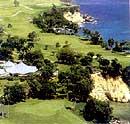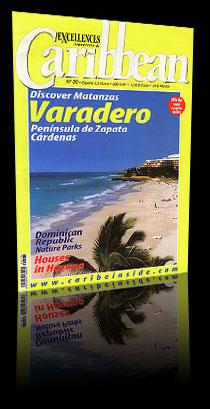Nature Parks In The Dominican Republic
The attractions the Dominican Republic has to offer embrace a whole lot more than just sun and beach. In recent years, the ecological and natural beauty of its nature parks have become must-sees for the thousands of tourists who visit the island nation every year.
The island's ecological resources Over 5,600 species comprise the Dominican flora, some of them hailing exclusively from the tropical area and the island. In the same breath, its wildlife is rich and diverse. Pelicans, seagulls, frigate birds and bubies are commonplace along the coastal strips. Specially gorgeous are the flamingos at Enriquillo Lake and the Oviedo Pond, the island's two most sought-after parks.
Nature parks: values on the rise The flamingos fluttering and hovering over Enriquillo Lake are no doubt one of the most dazzling animal species on the island's natural environment. Perched atop the dregs of a former maritime canal, this is the largest lake in all of the Antilles. The Haitises Nature Park is anchored inside Samana Bay northwest of the country. Its vegetation is made up of several tropical woods, thus making it one of the most diverse open spaces in both the Dominican Republic and the Caribbean, featuring as many as 700 plants and trees.
Located in the nation's southwestern region of Barahona and hedged by breathtaking marine terraces and coastal plains, the Jaragua Nature Park stands out for its tall and leafy vegetation where bight grapes, guaiacums, oaks and guazabaras, among other vegetable species, are the name of the game around.
Exuberant vegetation and exotic wildlife The relieve where the Armando Bermudez Nature Park lies is rugged. It shares –alongside the Jose del Carmen Ramirez Nature Park- the 3,175-meter-high Pico Duarte, the highest peak in the Antilles. The Sierra de Bahoruco Nature Park, for its part, sports a great assortment of vegetable formations ranging from sea-level dry forests to humid woods in the heartland of the park itself.
Other major natural resources: scientific reserves The Ebano Verde (Green Ivory) scientific reserve is sited in Loma de la Sal (Salt Hill) in the municipality of Jarabacoa. The top priority for this protected haven is the survival of the green ivory and other major vegetable and animal species that develop and grow exclusively under these biophysical conditions. The Valle Nuevo scientific reserve rises 2,200 meters above sea level in the eastern area of the Central Mountain Range. The top attraction of this environment is doubtlessly the Salto de Aguas Blancas waterfalls and its jaw-dropping 60-meter free fall.
The Dominican Republic: a natural treasure The Dominican Republic ranks on the top of the list when it comes to biological diversity in the Antilles, and is the only region where both Alpine and Andean vegetation coexist. It features Aguas Blancas, the Caribbean's highest waterfalls with two stunning cascades. Every year, the island is visited by the largest number of humpbacked whales looking for a safe spot to spawn their offspring. For all of this, the Dominican Republic stands for a beautiful ecological paradise checkered by exceptional natural spaces and teeming with important environmental values.






































































